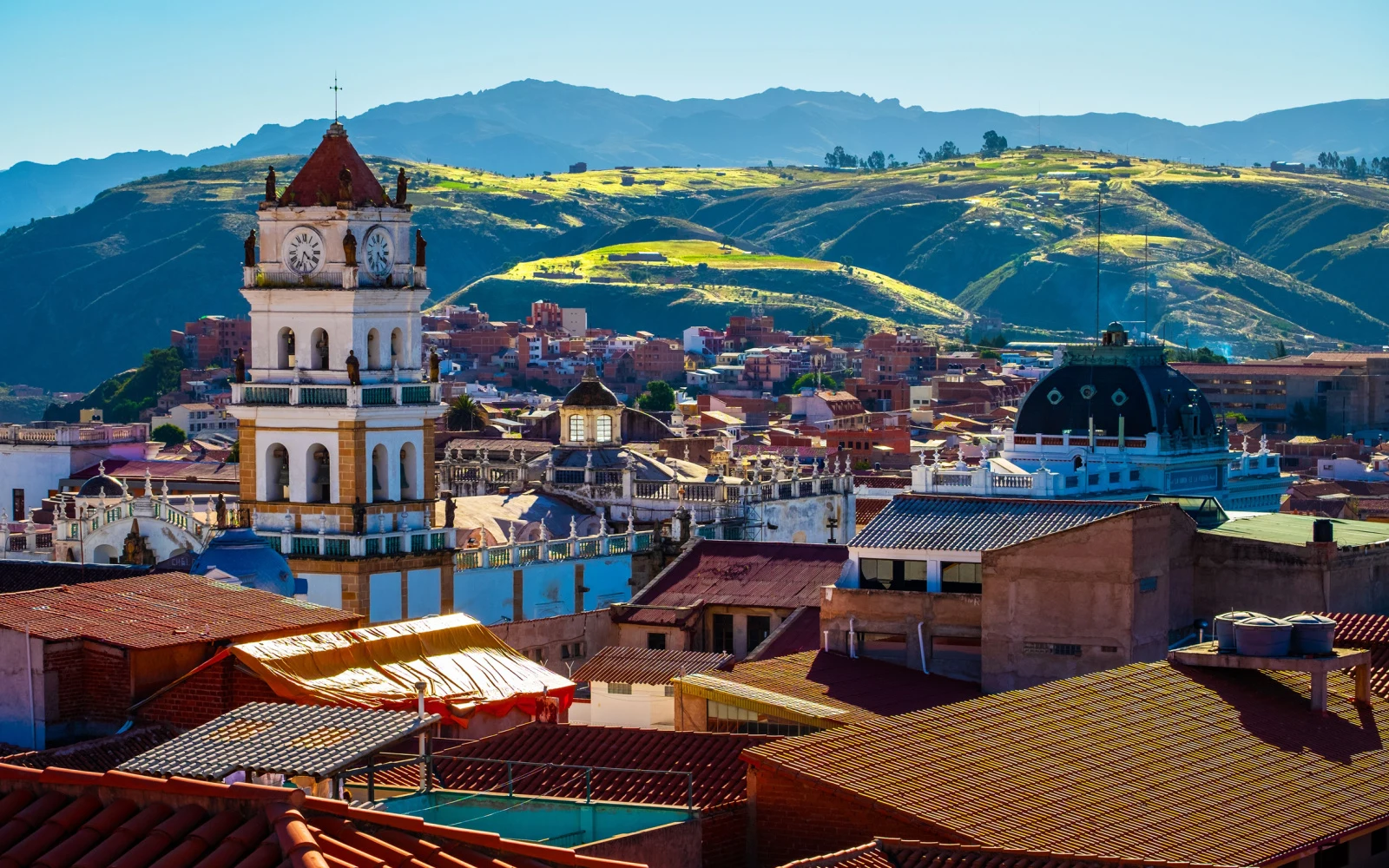What's the best time to visit Bolivia?
The best time to visit Bolivia is between May and October, the dry season, when mild temperatures and minimal rainfall favor outdoor exploration. May and June are ideal for hiking and visiting attractions like the Uyuni Salt Flats.
August sees peak tourist activity, higher prices, and vibrant cultural events. By October, as the dry season ends, crowds thin, offering a quieter experience to enjoy Bolivia’s diverse landscapes and cultural sites.
Planning your trip to Bolivia? With its captivating blend of ancient sites, vibrant cities, mesmerizing landscapes, and unique culture, Bolivia stands as a destination like no other.
However, the key to unlocking its full potential lies in understanding the best time to visit Bolivia, considering the country’s varied climate and vast terrain.
Whether your priority is basking under sunny skies, enjoying the crisp mountain air, or seeking a more budget-friendly adventure, knowing the optimal time to travel is crucial.
We’ll guide you through the nuances of Bolivia’s seasons, helping you find the best time to visit for spectacular weather, stunning views, vibrant festivals, and exhilarating activities.
The Overall Best Time to Visit Bolivia
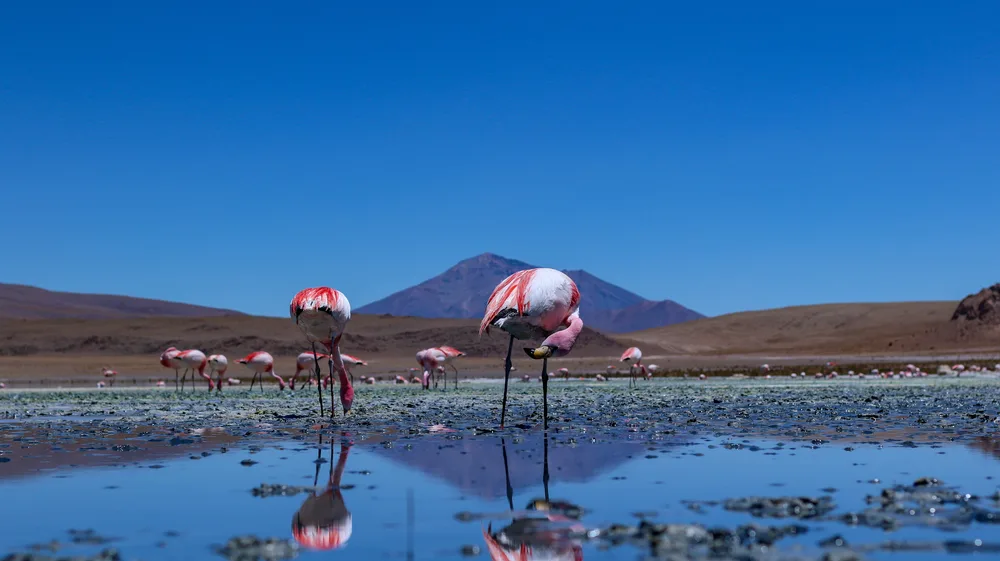
Daniela Ocampo Cardona/Shutterstock
The overall best time to visit Bolivia is during its dry season, from May to October. The temperatures are mild with a low chance of rain – perfect for outdoor activities and sightseeing.
May signals the start of the dry season, making it the ideal time for hiking in Bolivia’s Andes and exploring the Sajama natural wonders. The dry season has already set in June, with plenty of sunny days and the warmest temperatures.
However, you may experience chilly nights in the mountains and higher altitudes. Take the opportunity to explore La Paz and attend some events like the Night of the Museums or take a trip to Uyuni Salt Flats.
July follows the same weather pattern with long sunny days and freezing nights in the mountains. August is the peak of the dry season with a massive influx of visitors. Expect a slight price hike, more crowded attractions, and a much more vibrant atmosphere.
There’s also the chance of light rain and a temperature drop, so pack some light jackets and an umbrella. Participate in the Bolivian Independence festivities and explore the country’s rich cultural heritage.
Rainfall becomes more frequent in September and temperatures are not as high as in summer. It’s a great time to visit and explore the lowland cities, rural areas, and the Altiplano and highland regions.
October marks the end of the dry season with the temperatures starting to cool down. Visitors reduce as the season winds down and you’ll be able to enjoy more peaceful surroundings and lesser-known attractions.
Cheapest Time to Visit Bolivia
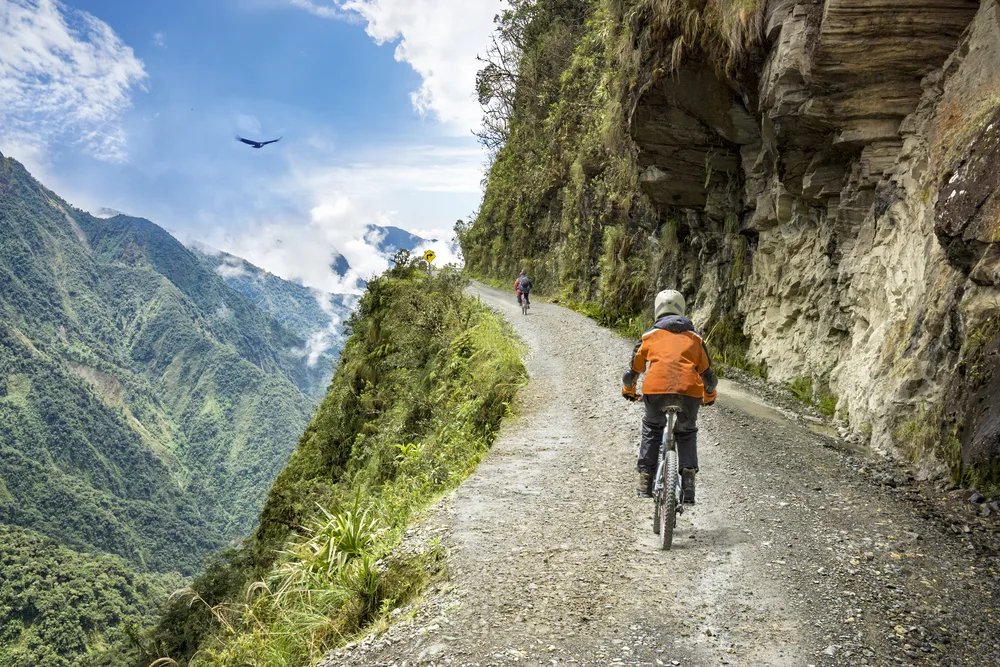
mezzotint/Shutterstock
The cheapest time to visit Bolivia is during the low season, from December to March. Due to lower demand at this time of year, prices for flights, accommodation, car rentals, and activities drop significantly.
It’s the rainy season in Bolivia, with daytime temperatures in the 40s, making it less desirable for tourists and backpackers. Nevertheless, it’s a great time for culture and history lovers looking for low prices.
December features the Christmas festivities, with local parades, vibrant street decorations, and unique cultural events.
With fewer crowds, you can immerse yourself in Bolivia’s rich history, purchase authentic handicrafts and souvenirs, and take advantage of discounts. Make sure to pack rain gear in case of an afternoon downpour.
January is the wettest and least popular month, with limited activities and attractions. Prices are at their lowest, and most accommodations are available.
While outdoor activities are discouraged during this time, you can still enjoy savory Bolivia traditional delicacies like pastel de queso at the La Paz Alasitas festival. The same weather pattern continues into February, with occasional rain and thunderstorms.
Prices remain low, making it an ideal time for bargain hunters. March is the end of the low season, and the rain starts to dry up.
The days become longer towards the end of the month and more pleasant, offering more outdoor activities. Despite the gradual rising rates, it’s still the most affordable time to visit Bolivia’s Amazon and enjoy Tarija festivals.
Least Busy Time to Visit Bolivia
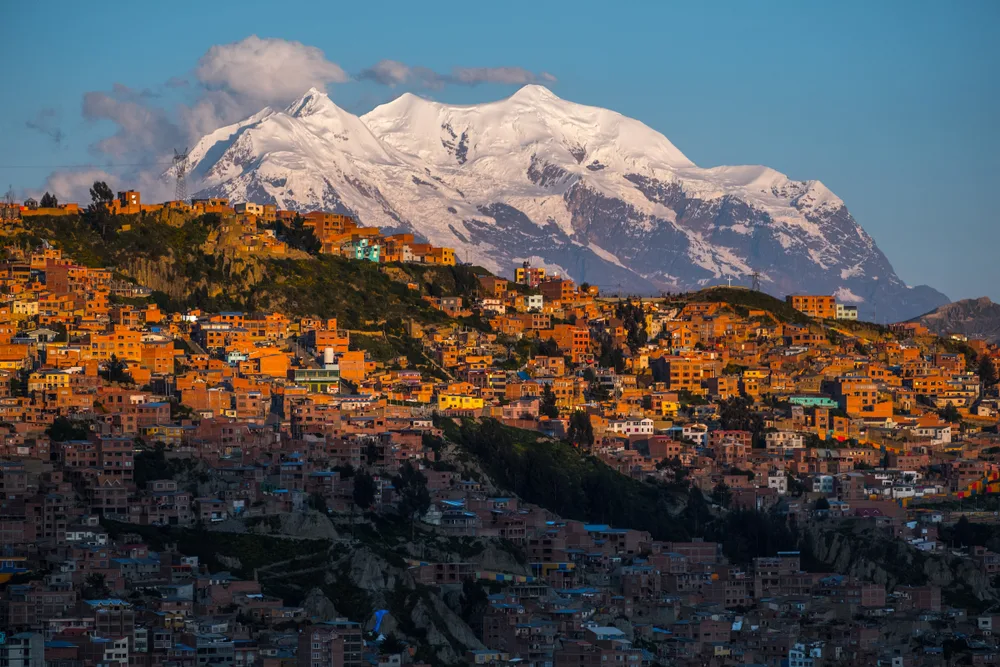
Dudarev Mikhail/Shutterstock
The least busy time to visit Bolivia is during the low season (from December-March) and in the shoulder seasons (from April to May and October to November).
It’s the off-peak season, so you can expect smaller crowds and reduced hotels, airfare, and tour rates. That’s ideal if you want to avoid the big crowds of peak season!
December through March is what the locals call Verano (rainy season), with an average rainfall of 31.5 inches around Lake Titicaca and 200 mm to the Southwest.
Although you’ll find fewer crowds, roads may become impassable and outdoor activities limited due to the wet and cold weather. Keep this mind if you plan to explore outdoors!
On the plus side, the rain produces lush vegetation and wildflowers, particularly on the Andes’ eastern slopes. If you don’t mind getting drenched, it can be a beautiful backdrop for a quieter and more contemplative trip. April and May are another time of year with low prices and fewer crowds.
It marks the end of the rainy season and the arrival of a warmer, drier climate. During April and May, the high season has yet to start.
That makes it a great time to explore the country before the crowds begin pouring in. As the peak season ends in September, take advantage of the less busy months of October and November to explore Bolivia’s rich culture and history.
Worst Time to Visit Bolivia
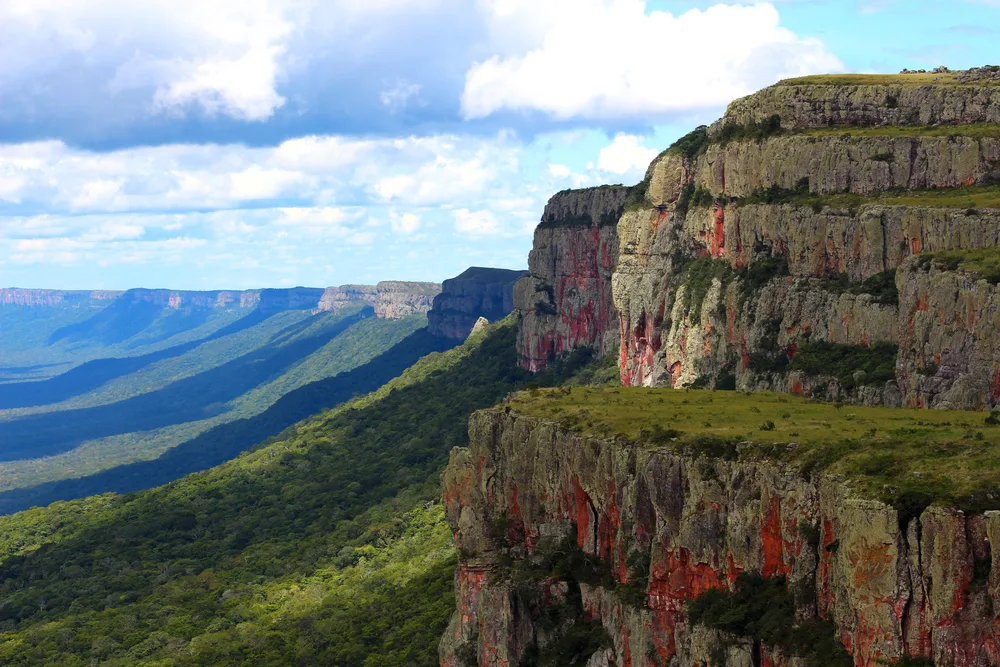
HelmDyck/Shutterstock
The rainy season that runs from November to March is the worst time for visitors. Rainfall can be intense, temperatures drop, and tourism infrastructure gets compromised.
December’s weather is milder throughout Bolivia, with cities like La Paz and Santa Cruz seeing temperatures hovering around 50F and 13 hours of sunshine daily.
You can catch surreal sunsets in Valle de la Luna and warm nights in the jungle. However, conditions can still be unpleasant and disruptions are possible, so it’s best to avoid this time of year.
Enter January, the absolute peak of the rainy season. Heavy rainfall and flooding can be expected, and some attractions may be closed. Expect nighttime temperatures to drop as low as 53F in the highlands of La Paz, making it less than an ideal destination for travelers.
Temperatures remain warm and sunny in parts of the lowlands like Santa Cruz. February brings more of the same wet conditions and potential disruptions.
Despite this, the month offers travelers warm days and a chance to catch a glimpse of wildlife in Madidi National Park.
March sees an improvement in the weather as rainfall starts to wane, ushering in a transition from wet to dry season. Many attractions slowly begin to open, and conditions favor outdoor activities like hiking and exploring.
Bolivia by Month: Climate & Activities
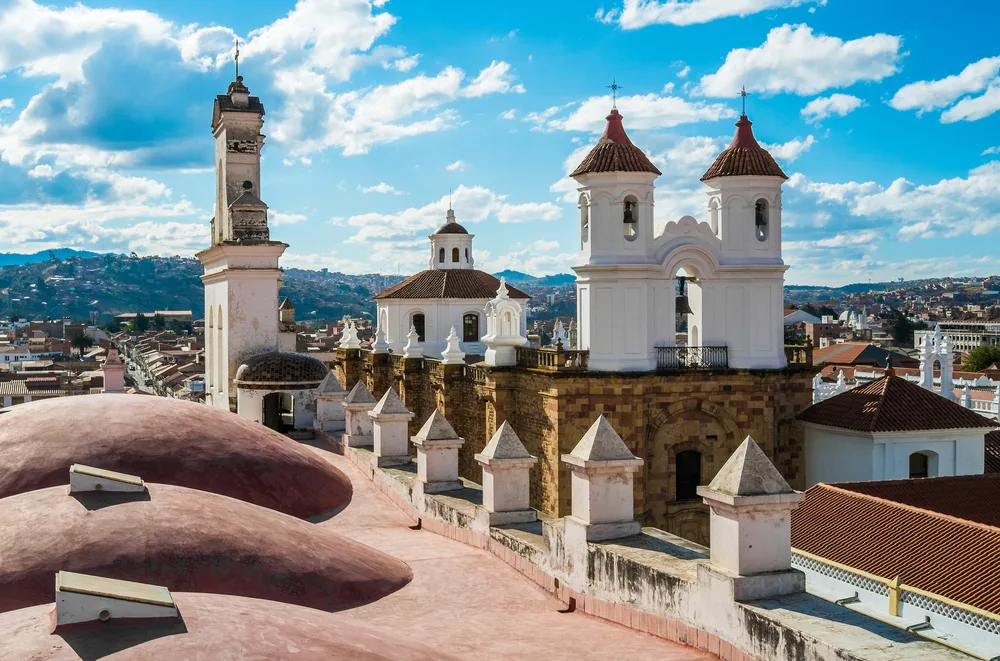
Elisa Locci/Shutterstock
Still unsure about the best time to visit Bolivia? Take a look at our summary of the weather and climate by month below:
January
January in Bolivia is in the midst of the rainy season, with temperatures varying greatly by region. It’s an ideal time for visiting the lowlands and the Amazon basin for lush greenery and wildlife viewing, and experiencing the Alasitas Festival in La Paz, a celebration of miniatures and prosperity.
February
February continues with the rainy season, perfect for experiencing the Carnival of Oruro, a UNESCO Intangible Cultural Heritage event known for its spectacular folk dances and costumes. The salt flats of Uyuni present a unique mirror effect due to the rainwater.
March
As the rainy season starts to recede in April, temperatures across Bolivia are mild. This month is great for exploring the Jesuit Missions of Chiquitos, UNESCO World Heritage sites, and enjoying the lush landscapes of Yungas.
April
April brings the end of the rainy season, with favorable conditions for trekking in regions like the Cordillera Real and visiting the city of Sucre, known for its well-preserved colonial architecture.
May
In May, Bolivia sees the beginning of the dry season, ideal for exploring the Salar de Uyuni salt flats in their classic, stark beauty. It’s also a good time for cultural experiences in cities like Potosí and Tarija, known for its wine production.
June
June brings cooler, dry weather, perfect for visiting Lake Titicaca, the world’s highest navigable lake, and exploring the Island of the Sun with its ancient Inca ruins.
July
July is the heart of Bolivia’s dry season, with clear skies ideal for stargazing on the Salar de Uyuni. It’s also a great time for hiking in the Andes and exploring the city of La Paz with its unique blend of traditional and modern cultures.
August
August continues the dry season. Visit the Madidi National Park for pristine Amazon rainforest experiences, and explore the pre-Inca ruins of Tiwanaku, a UNESCO World Heritage site near La Paz.
September
As spring begins in September, temperatures start to warm up, making it a great time to visit the Noel Kempff Mercado National Park, a biodiversity hotspot, and enjoy the vibrant city life in Santa Cruz.
October
October sees the return of occasional rains, revitalizing the landscapes. Explore the Torotoro National Park for its dinosaur footprints and stunning landscapes, and visit the colonial town of Sucre.
November
The onset of the rainy season in November brings lush greenery to Bolivia. It’s a good time to visit the Amboró National Park for bird watching, and explore the unique cultural heritage of the city of Cochabamba.
December
In December, Bolivia is warm and increasingly rainy, perfect for exploring the eastern lowlands and enjoying the tropical climate. Visit the city of Trinidad in the Beni region for a unique blend of Bolivian and tropical culture.
Frequently Asked Questions
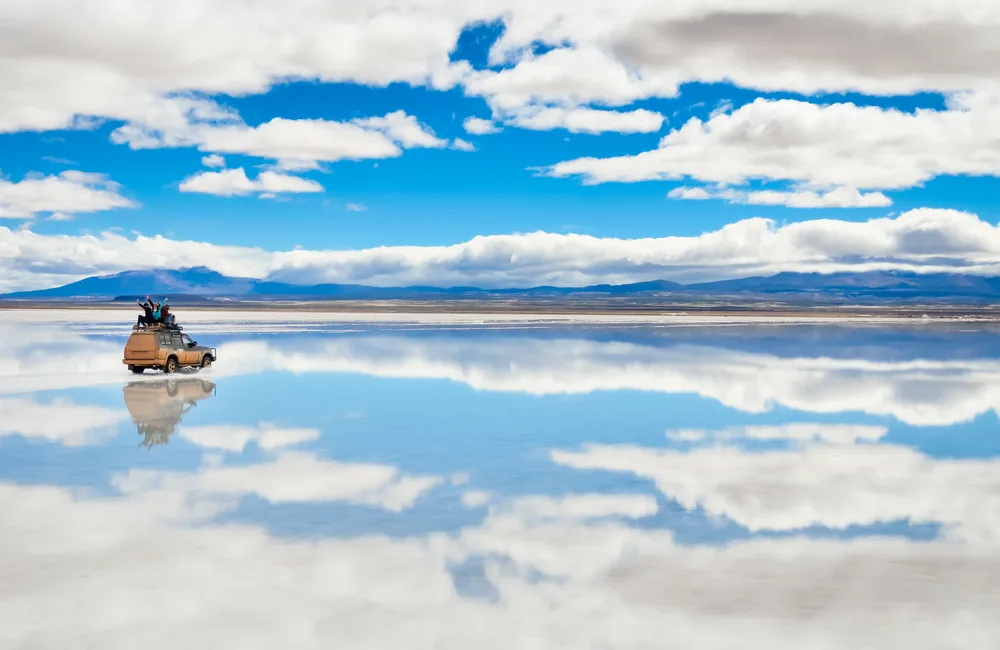
Olga Kot Photo/Shutterstock
Here are the answers to some FAQs about the best time to visit Bolivia.
How many days do you need in Bolivia?
A minimum of 10 days in Bolivia is recommended for a full and rewarding experience. However, with a wealth of attractions and activities, you could easily spend 2 weeks exploring this diverse and captivating country.
Do they speak English in Bolivia?
English is spoken by a very small percentage of the Bolivian population, primarily the wealthy and those working in the tourism and hospitality industries. Learn a few key phrases in Spanish before your trip.
Can you drink tap water in Bolivia?
While some areas treat their water, drinking tap water in Bolivia is not recommended due to contamination. If feasible, use bottled water or boil and filter your water.
Is Bolivia friendly with the U.S.?
While diplomatic and political relations between the US and Bolivia have been strained, today, both countries have a cordial relationship. Americans are welcome in Bolivia and most people are friendly and receptive.
Are there cartels in Bolivia?
Like many other countries in South America, Bolivia is a hub for organized crime, drug trafficking, and cartels, including the Santa Cruz Cartel.
While crime is a concern in Bolivia, taking basic safety precautions and researching your destination can help keep you safe.
So, What’s the Best Time to Visit Bolivia?
Overall, the dry season, which lasts from May through October, is the best time to visit Bolivia. The weather is pleasant and sunny, making it ideal for various outdoor activities.
If you’re on a tight budget, the low season, which runs from December to March, is the cheapest time to travel as prices for flights and accommodations fall significantly.
You can plan to travel during the low season from December to March and shoulder seasons in spring and fall for a serene experience with fewer crowds. The worst time of year to visit Bolivia is the rainy season, which runs from November to March.
This period sees heavy rainfall and intense thunderstorms, making travel difficult. Plan during the best time to visit Bolivia or arrive during the harsher rainy season – honestly, you’re going to enjoy your trip and all the experiences Bolivia has to offer no matter when you go!
Plan ahead and take measures to stay safe and healthy while you go and you’ll be set to make awesome memories here.



